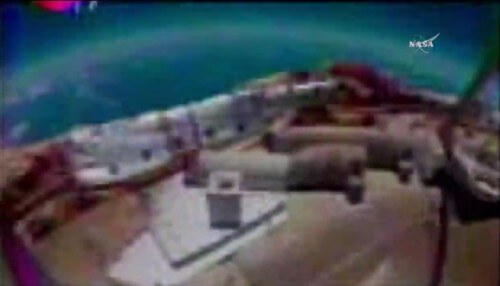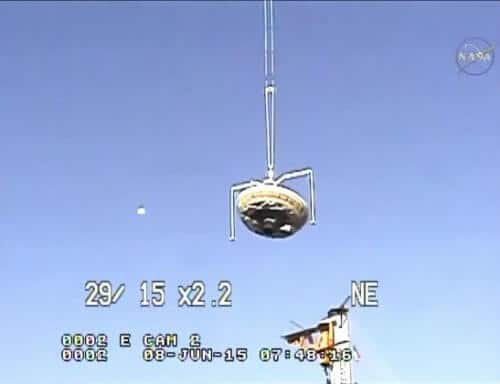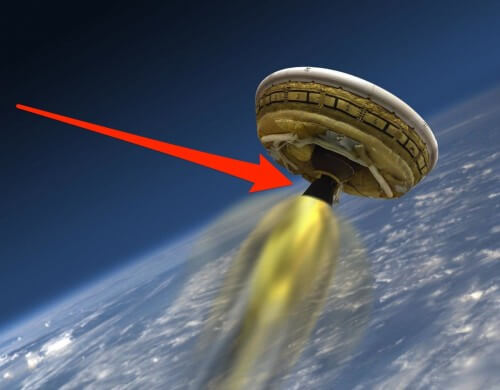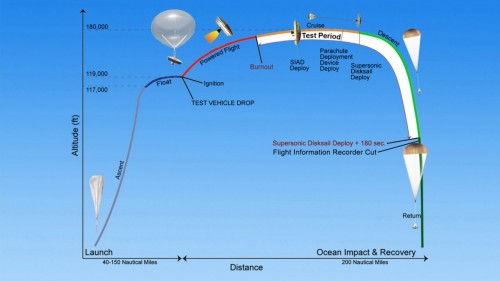Again a malfunction in opening the parachute. The flying saucer-shaped lander fell into the Pacific Ocean at a faster than planned speed.
9/5/15 time 01:00 The experiment ended, the ignition worked as planned, the spacecraft reached the correct altitude where the thinness of the atmosphere is similar to that of Mars at a speed of Mach 4. However, the parachute that was supposed to help slow her down and land her safely did not open, even though it was redesigned according to the lessons learned from the experiment from about a year ago.
In a tweet on Twitter, NASA personnel wrote immediately after the end of the experiment: We reached Mach 4, the SIAD (flying saucer) detached from the balloon and inflated, the parachute came out of its mount and went up but did not open. NASA will review the data from the experiment, to learn and improve.



Update 23:20 - The balloon with NASA's "flying saucer" on it was launched at 20:00 and is on its way to cruising altitude. When he gets there, he will throw the flying saucer which should inflate and slow down its speed. This action should take place after midnight Israel time.
For news last night at midnight
NASA personnel are supposed to drop at 00:35 the new means to slow down landings on Mars similar to a flying saucer * The experiment was postponed several times due to too strong winds, in the middle between the earth's ground and an altitude of about 50 kilometers, to which the flying saucer is raised by a balloon
NASA has plans to land the first humans on Mars in 2035, but getting there requires building a larger spacecraft than the space agency has sent to Mars so far.
The technology used by NASA to land the Curiosity rover on Mars in 2012 will not be suitable when it comes to heavy cargo, which is required for a manned mission.
The goal of the LDSD project is to design a safe and inexpensive method of decelerating the landing of a spacecraft from the moment it enters the Red Planet's atmosphere. Therefore, NASA decided to build a light lander but with a large surface area as part of the low-density supersonic decelerator (LDSD) project. The special feature of the lander is its shape - a flying saucer whose role is to allow astronauts to descend to the Martian soil.
The system includes a balloon-like device in the shape of a giant ring that inflates around the spacecraft and is supposed to slow its fall after entering the atmosphere. In the next step, a huge parachute - more than 30 m in diameter - should open and stop the fall. The first test of the flying saucer was conducted about a year ago on June 28, 2014. During the 2014 test flight, the saucer was raised to a height of over 120 feet (36.5 km) on a hot air balloon. At this altitude the Earth's atmosphere is very thin and therefore very similar to the atmosphere of Mars. However, the giant parachute did not open and the lander crashed into the waters of the Pacific Ocean.
This time, too, the test is expected to take off from the US Navy's intercontinental ballistic missile facility in Kauai, Hawaii. The spacecraft will first be raised to a high altitude using a balloon. This means that it is not recommended to conduct the experiment if the wind is too strong. At this point she can delay the launch until Friday, June 12th.
The ambitious technology includes two main components - a body that looks like a flying saucer known as the Supersonic Inflatable Aerodynamic Decelerator (SIAD) wrapped around the body of the lander.

When the balloon reaches a height of 180 thousand feet (about 55 km) the straw will inflate and inflate the flying saucer with it. In this way it will be possible to increase the surface area of the lander without adding to its weight. Due to the increased surface area, the speed of the plate will decrease from 4,000 km/h to 2,400 km/h, still twice the speed of sound.
We will add and update on the development of the experiment.
2014: Failure of the spacecraft landing system. The flying saucer crashed in the ocean

2 תגובות
I'm just wondering, isn't it possible to check things like this first in a wind tunnel? Or on a much smaller, simple and cheap model just to test whether in principle the mechanism works or not?
I wonder how many tens of millions of dollars went down the drain here.
Sorry to say, but it seems to me that there are young amateurs working there who don't know how to do the job and someone has to take responsibility and fly away, it's not possible that a simple mechanism for opening a parachute doesn't work twice after all the preliminary tests that were done and all the planning.
Looking from the side it sounds like a serious mistake, it doesn't make sense.